

Anthology
Expo 2020-2021
BSP
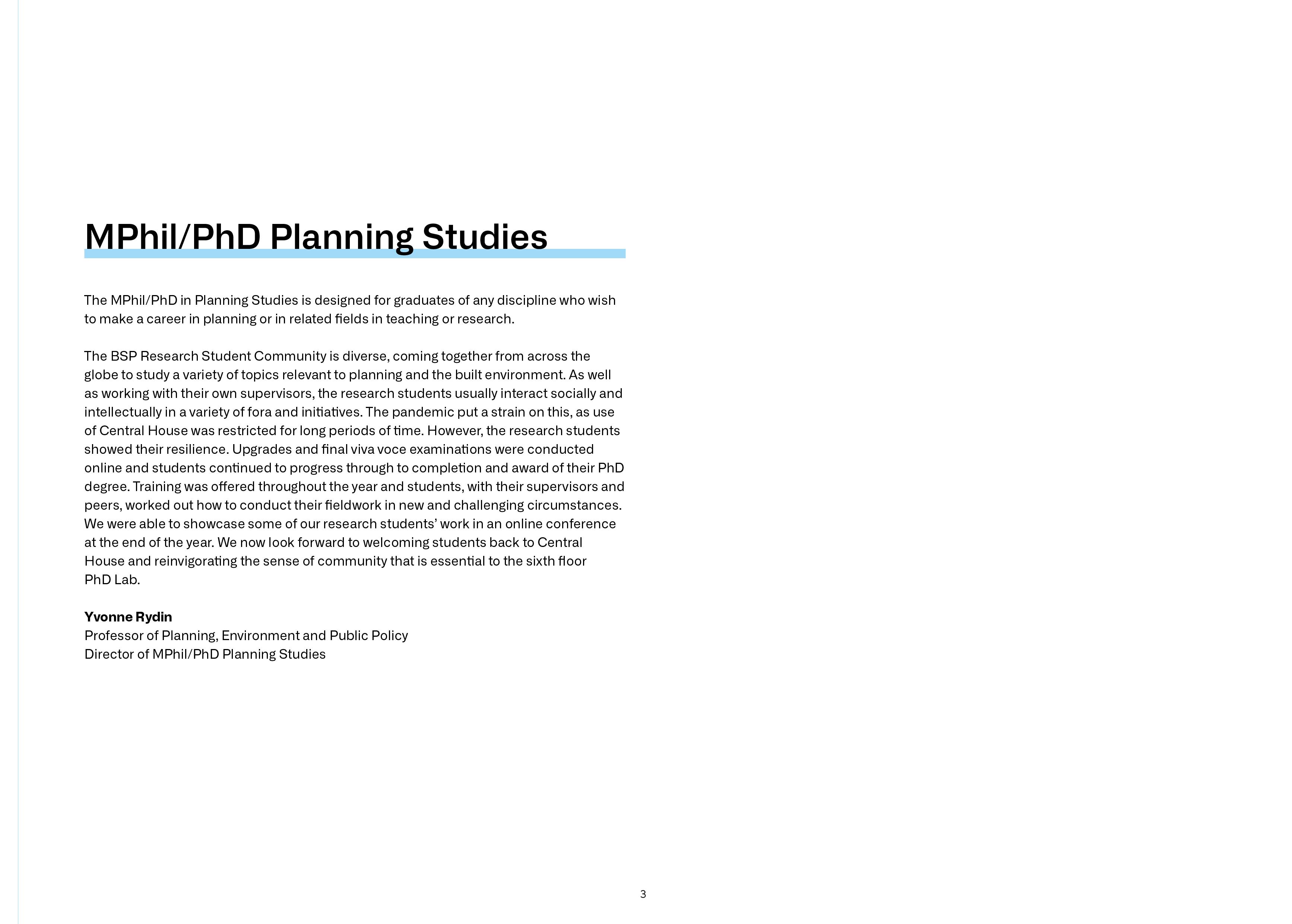 Juan Alberti
Juan Alberti
Topic
Mega Infrastructure and Development
Location
Latin America
Scale
Region
Contribution
Empirical
Primary supervisor
Professor Harry
Dimitriou
Secondary supervisor
Dr John Ward
Mega-transport projects and the “rules of the game”: The role of contractual risk management in the planning and appraisal process in Latin America
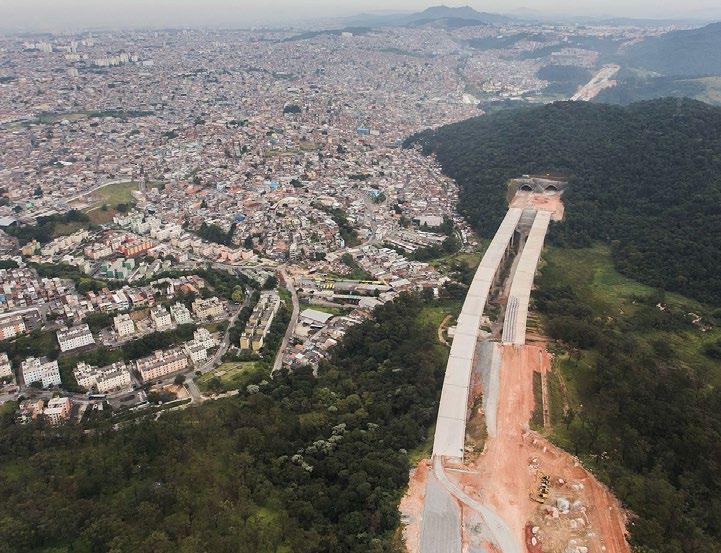
In this context, it is reasonable to state that there may be different institutional elements (cultural-cognitive, normative and regulative) that could be promoting a ‘closed systems’ approach to decisionmaking when planning and appraising megaprojects in Latin America. This research is concentrated on analysing a specific part of the regulative elements, and uses a New Institutional Economics approach to thoroughly analyse this topic.
This research examines the relationship between the planning, appraisal and procurement/delivery stages of MTP decisionmaking. It pays special attention to the contribution of the formal institutional environment surrounding such decision-making when contracting and executing such megaprojects, in the pre-selection of a closed system approach to decision-making at the planning and appraisal stages.
Karla Barrantes
Chaves
Topic Cities, Real Estate and Economic Development
Location
Costa Rica
Scale
Region
Contribution
Empirical
Primary supervisor
Professor Claudio De Magalhães
Secondary supervisor Dr Pablo Sendra
Sponsor
Universidad de Costa Rica
Fear of crime beyond the walls: Effects of gated communities in neighbouring
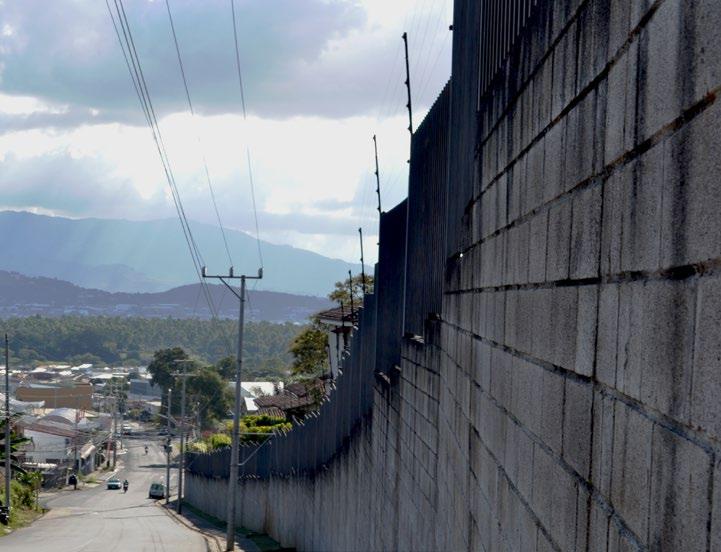
Gated communities in Costa Rica have proliferated in the last two decades, occupying large areas of land without control over their shape, size or design. In Latin America, fear of crime is a persistent worry and, some people have seen in gated communities shelters against criminality.
However, those developments might be increasing the residential segregation and, paradoxically fuelling fears towards their peripheries. This research aims to explore the distribution of fear of crime outside of gated communities, in the adjacent areas. It analyses the variation of that feeling according to poverty levels and elements of the built environment. The research takes place within the Greater Metropolitan Area of Costa Rica.
4 5
PhD PhD
Photo: Governo do
Estado São PauloFlickr, CC
Photo: Karla Barrantes Chaves Mega InfrasTruCTure and develOPMenT lOCaTIOn laTIn aMerICa sCale regIOn COnTrIBuTIOn: eMPIrICal
MEGAPROJECTS and the rules of the game: the role of contractual risk management in the planning process in Latin America TOPIC:
dO esTadO sãO
f ICkr, CC
PHOTO: gOvernO
PaulO
Juan Alberti
PHOTO: Karla BarranTes CHaves
esTaTe and eCOnOmIC
lOCaTIOn: COsTa rICa
Fear of Crime beyond the Walls: Effects of Gated Communities in Neighbouring Public Spaces. The
Case
of the Greater Metropolitan Area of Costa Rica. TOPIC: CITIes real
develOPmenT
sCale: regIOn COnTrIBUTIOn: emPIrICal
Karla Barrantes Chaves
In Latin America, a challenge is that a “closed systems” approach to decision-making is formally requested by central governments at the planning and appraisal stages of megaprojects, considering project and economic efficiency as measures of success. When dealing with the selection (among options) of the project and when deciding objectives and goals to be adopted, an “open systems” approach to decision-making is more consistent with the nature of megaprojects.
Eight study cases were selected; they correspond to neighbourhoods next to gated communities with distinct levels of unfulfilled needs (NBI). The NBI indicator encompasses access to good and services, housing, education and health. The empirical data were collected through walking interviews tracked with GPS, focus groups, in-depth interviews and observations. The preliminary findings suggest an overall increase in the intensity of fear of crime next to the gated communities’ walls; which is exacerbated by the profound residential segregation. That feeling varies according to income inequality, community ties and, features of the built environment.
Graziano Di Gregorio
Topic
Sustainable Transport, Infrastructure & Cities
Research Location
United Kingdom
Scale
Region
Contribution
Empirical
Primary supervisor
Dr John Ward
Secondary supervisor
Dr Iqbal Hamiduddin
Sustainability appraisal framework for Investment in Airport development infrastructure

Over the last century, aviation has become the world’s fastestgrowing global industry with more than 18,000 commercial aircrafts in service, 1,300 airlines operating and over 1,200 airports open to international aviation. Airports have become increasingly complex, influential and expensive investments, but also places of huge controversies. Several protests around airport construction and expansion have raised critical issues and revealed tensions between the varying implications and impacts they exert on their surrounding areas at a variety of scales.
Considering the changing attituded towards climate change, this research aims to investigate how the public and the private sector will be able to secure the necessary social and environmental consensus to ensure that the industry will continue to success to 2050, and beyond. Heathrow Airport is adopted as case study. Early this year, the Court of Appeal in London ruled in favour of campaigners fighting to block plans for a third runway at Heathrow Airport in London. This decision has thrown Heathrow expansion plans into doubt and has opened a completely new frontier for planning challenges to major projects in Britain and around the world.
The Dynamics of Place Attachment and
Perceived Density; Exploring the
Vafa Dianati
Topic
Sustainable Transport, Infrastructure & Cities
Location
Tehran
Scale
Neighbourhood
Contribution
Empirical
Primary supervisor
Dr Catalina Turcu
Secondary supervisor
Dr Michael Short

In this thesis, the much-debated question of the association between urban density and social sustainability is approached from an alternative perspective. It is argued that instead of taking a positivist approach, an ample consideration of the subjective side of urban density and social sustainability would potentially contribute more to a deeper understanding of the complexities of this association.
The findings suggest that process of densification impacts people-place relationship in four thematic ways: transforming place functionality and residents’ dependence on place; vanishing signs and sites of personal and collective memory; degrading environmental and physical qualities of place; and altering the socio-demographic structure of place. The interplay is also under the influence of external intervening factors expanding across various scales, from individual preferences to the general societal attributes.
More importantly, this thesis argues that the prominent and controversial question of the relationship between urban density and social sustainability should be reformulated, refined and redirected to address the procedural element of both density and sustainability as concepts always in the status of becoming.
Photo: Graziano Di Gregorio
PhD PhD
Photo: Delso, D. (2016)
Interplay Between Experience of Urban Densification
Place Attachment in Tehran.
Sustainability, major infrastructure projects and community consensus. The case of Heathrow Airport
The
and
delSO, d (2016)
PhOTO:
Vafa
Dianati
6 7
Cristobal Diaz
Martinez
Topic
Segregation, Housing
Location
Santiago, Valparaíso, Chile
Scale
Urban Region
Contribution
Theoretical, Methodological
Primary supervisor
Dr Sonia Arbaci
Secondary supervisor
Dr Nicola Livingstone
Cristobal
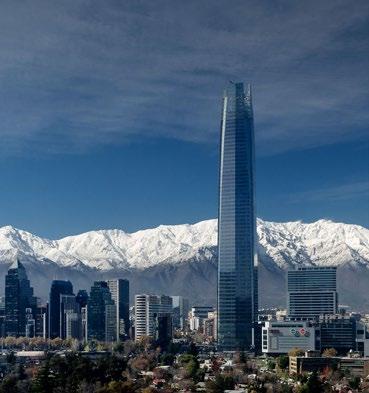



The research aims to understand the interplay among 3 sociospatial processes: Residential Segregation, Residential Mobility and Housing Production. The latter with an emphasis on informal housing strategies in the metropolitan areas of Santiago and Valparaiso, in the period 1992-2017.
A historical analysis of segregation and housing production will be conducted in both cities. An assessment of recent housing policies such as the “Chao Suegra” rental subsidy and “2nd chance” relocation social housing subsidy will be developed. The previous, in order to understand the effectiveness of these voucher programs to tackle overcrowding (allegamiento) and the increasing number of self-built settlements (campamentos).
The success of the policies in promoting residential mobility in low-income families will interact with the formal/informal housing strategies they pursue and the dynamics of residential segregation (patterns, resistances). My work will contribute to a comprehensive analysis of segregation and its structural factors, in order to develop a research line in chilean and latinamerican cities, under a comparative contextual divergence perspective.
Abir Eltayeb
Topic Prosperity Beyond Gdp
Location
Lebanon Scale
National Contribution
Theoretical, Empirical
Primary supervisor
Dr Michael Short
Secondary supervisor Professor Claudio De Magalhaes Sponsor
IJURR (International Journal of Urban and Regional Research) Foundation
Rethinking the Role of the Lebanese Urban Planning Law in Times of Intersectional Crises and Austerity to Urban Public Services
Rethinking the Role of the Lebanese Urban Planning Law in Times of Austerity: Can We Move Towards Inclusive Prosperity?
Abir Eltayeb
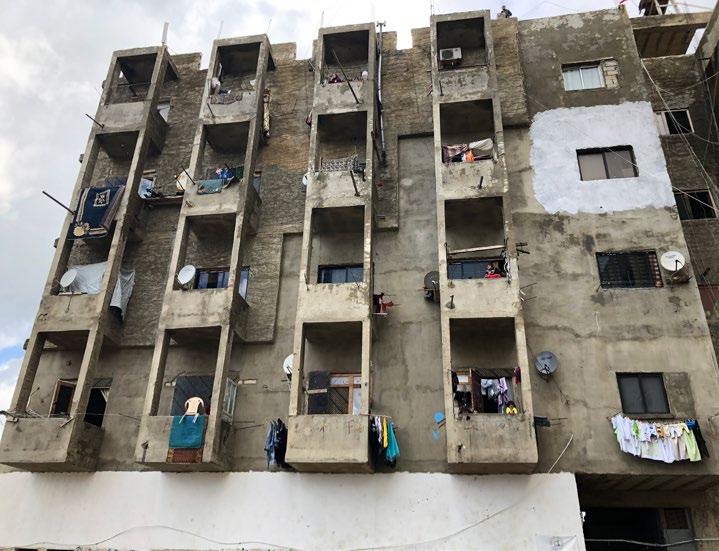
Urban planners, economists, and legislators working in government positions in localities and regions across the world are seeking prosperity and wellbeing amidst state austerity and cuts in public budgets (Pike and Tomaney 2006). Yesterday’s prosperity was assumed to be the diametrical opposite of austerity. It was conceptualized as simple economic growth in GDP. However, in recent years, many countries have been experiencing a convergence of crises along with concerns around equality and human wellbeing (Fioramonti 2016). This convergence reinforced the debate around the inadequacy of relying on GDP indicators as proxies of prosperity (Stiglitz 2009; Joshanloo, Jovanović, and Taylor 2019). Economic growth and GDP per head seem decoupled from subjective wellbeing. They suggest that localities and regions perform similarly on a macro level, but mask significant differences in terms of people’s quality of life when we consider dimensions of wellbeing such as equal access to housing and basic public services through urban planning – albeit with insights and procedures that still need to be developed (Tomaney 2015). Prosperity is thus explored in this research in terms of ways in which the benefits of urban development can inclusively reach all citizens and are translated into factors reflected in their quality of life. For example, inclusive and reliable infrastructures and services are fundamental to people’s lives (Mintchev, Baumann, Moore, Rigon, and Dabaj 2019).
PhD PhD
New voucher programs for low-income families in Santiago and Valparaiso: residential mobility or struggle against segregation?
Photos: Techo, 2018
Photo: Author
New voucher programs for low-income families in Santiago and Valparaiso: residential mobility or struggle against segregation?
Diaz Martinez
8 9
Yi Feng
Topic
Cities, Real Estate and Economic Development
Research
Location
China
Scale
City
Contribution
Conceptual
Primary supervisor
Professor Fulong Wu
Secondary supervisor
Dr Fangzhu Zhang
Financing Urban Development in China Using
Yi Feng
Local Government Financial
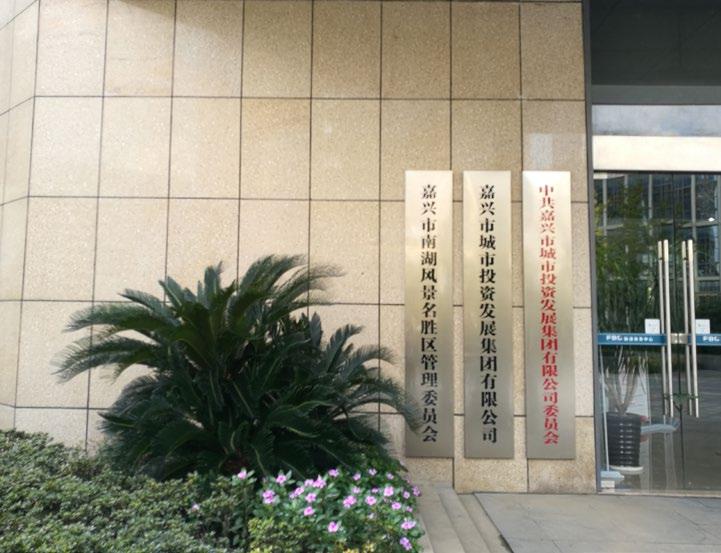
The literature has documented the expansion of financial activities to fund urban development, which enmeshes local governments in the financial market and leads to governance restructuring. In extreme cases, finance overturns previous power relationship and leads to financialized governance in the lateentrepreneurialism. Situating Chinese urban development in this body of literature, this research aims to explain how to finance and govern urban development in post-crisis China using local government financial vehicles (LGFVs).
Further, it aims to answer whether China has seen a governance shift from entrepreneurialism to financialization after extensively adopting financial instruments. First, the role of the state and the development of the LGFVs will be studied via desk research.
Second, this research will detail the financing mechanisms and the local governance restructuring by case studies on two types of LGFVs. Third, the Chinese pathway of governance restructuring in the financialization of urban development will be discussed by taking Shanghai as an example. The research will contribute to the theorization of governance financialization.
Miguel Hincapié
Triviño
Topic Urban Design Research Group
Location
Colombia Scale
Regional and Town
Scale
Contribution
Empirical
Primary supervisor
Dr Elisabete Cidre
Secondary supervisor
Dr Michael Short
Landscape character conservation through local communities’ participation: learning from cultural landscapes in Colombia
Miguel Hincapié Triviño
Landscape character conservation through local communities’ participation: The Case of Colombian cultural landscapes
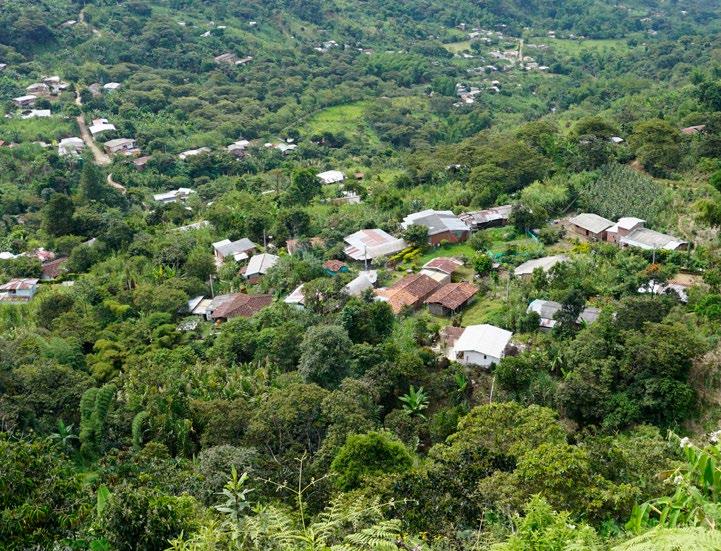
How do local communities influence landscape character conservation? What factors enable the implementation of community actions? And how do these inform and contribute conservation planning frameworks for cultural landscapes? The research aims to answer these questions through a multiple case-study of two cultural landscapes in Colombia: Zone A of the Coffee Cultural Landscape (CCL) and the Historic Town of Santa Cruz de Mompox.
The research shows multiple contributions of local communities into landscape character conservation; particularly, through productive and everyday activities connected to their cultural and social values. Continuous organic production in coffee farms enhances biodiversity, visual and experiential attributes in mountains of the CCL; while ceremonial, social and spiritual practices strengthen a sense of place and collective memory of both Mompox and the CCL. The findings confirm previous assumptions on the relevance of traditions in the management of landscape change; however, they also provide insights into the role of value-rational social action for guiding the work of individuals and associations. Despite evident issues of inclusion and representation in current conservation frameworks, local communities demonstrated capacities in finding support that allowed to fulfil collective goals. It showed potentials of multiple actors articulation for successful planning practices.
PhD PhD
Photo: Yi Feng
Financing Urban Development in China Using Local Government Financial Vehicles
Photo: San Lorenzo Resguardo in the Coffee Cultural Landscape (Miguel Hincapié, 2018)
10 11
Ying-Chun Hou
Topic
Cities, Governance and Planning
Location
Taipei
Scale
City/Neighbourhood
Contribution
Empirical/Theoretical
Primary supervisor
Professor Mike Raco
Secondary supervisor
Dr Susan Moore
Community-led urban planning reform under developmental-state planning system –
Community-led urban planning reform under developmental-state planning system--a study of Taipei, Taiwan
Ying-Chun Hou
a study of Taipei, Taiwan

This study contributes to understandings of community-led governance and planning reform through a contextualised analysis of recent initiatives in Taiwan.
Community-led planning practice, which emphasises participation, partnership and consensus-building, has become important as it symbolises the democratisation of planning system.
However, current writings of community engagement are mostly generalised from experiences of western democratic countries and have paid insufficient attention to, for example, in East Asian contexts, or those countries in which developmental-states have pursued modernisation programmes for decades.
To address this gap, this study will look into recent planning reforms in Taipei and the dissemination of Government-led Urban Regeneration Programs by Taipei City Government since 2016, which reshapes particular constructions of community as both a critical policy subject and object in urban policy reform.
Photo: https://www. touristsecrets.com/ Destinations/ Best-Things-To-DoIn-Taipei-Taiwan/
The aim of this research is to investigate the diverse rationalities for community construction, how community constructions are embedded into the planning system and what is the impact of this planning reform on.
Lin-Fang Hsu
Topic Urban Evolution
Location
Taipei, Taiwan
Scale
Metropolitan Region
Contribution
Theoretical, Empirical
Primary supervisor
Dr Jung Won Sonn
Secondary supervisor
Dr Juliana Martins
A Flourishing Smart City for Entrepreneurs? Evolution of Urban Technological Innovation Pattern in the Digital Age
A Flourishing Smart City for Entrepreneurs? Evolution of Urban Technological Innovation Pattern in the Digital Age
Lin-Fang Hsu
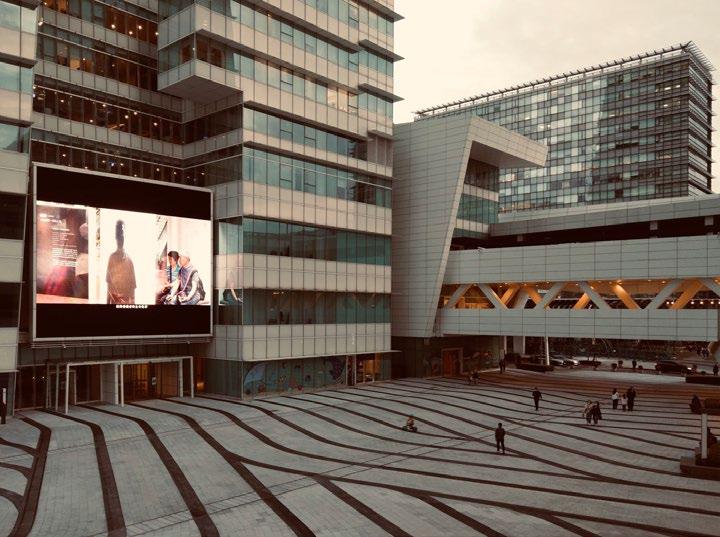
Innovation and entrepreneurship have been described across history as key drivers of regional growth (Schumpeter 1934; Lambooy 2002; Boschma and Martin 2010). As such, numerous scholars have argued that the creative competencies of economic agents or markets can lead to economic evolution (Metcalfe 2006).
In the last decade, we witnessed a significant increase in the development of Information and Communication Technologies (ICTs) and Digital Technologies. In parallel, a variety of technological applications have emerged in cities, leading to signifincant transformations in urban innovation and a new trajectory for urban development. IBM, the multinational technology company, introduced the concept of ‘Smart Cities’ to the global market in 2008, contributing to its rising popularity (Willis and Aurigi 2017). As a result, the understanding that cities are engines of creativity and innovation has become more prevelent than ever. The demand for technology-dependence in cities located in emerging markets creates a new opportunity for high-tech entrepreneurs to florish (Kummitha 2019). In addition, this demand has been said to open up a ‘window of locational opportunity’ (Stoper 1997; Boschma 1996) for regions to develop new technologies that can drive industrial transformation.
PhD PhD
Photo: Lin-Fang Hsu
PhOTO:
hTTP ://www TOur sTseCreT COm/desTInaTIOns/besT-Th nGs-TO-dO- n-TaIPe -Ta wan/
12 13
Elisabeta G. Ilie
Topic
Urban Design
Location
London Scale
City
Contribution
Conceptual/ Theoretical
Primary supervisor
Dr Filipa Wunderlich
Secondary supervisor
Professor Matthew Carmona

The current debate around inclusive urban design focuses predominantly on physical accessibility to the built environment. In doing so, it perpetuates broad social stereotypes of normality and order when using public space and engages only partially with groups experiencing spatial exclusion. As a result, in its present form inclusive urban design falls short from meeting its overarching goal: designing cities for all.
This research challenges taken-for-granted notions of inclusion by and through urban design, as well as the discipline’s working methodology which is unsuccessful in delivering tailored solutions due to a limited understanding of marginalised individuals’ lived experiences and resulting needs. The research hereby attempts to rephrase the conversation about what and who belongs in urban public space and goes on to explore an alternative theoretical framework for an altogether more inclusive urban design approach. In order to achieve this, the present work builds on sociological theories of phenomenology and sociocultural production of space and of a socially different Other.
To probe the proposed framework, the research works with the case study of urban rough sleepers in London. The lessons drawn from this exercise inform tailored tools and solutions when designing public spaces inclusive of the study group, as well as more general guidelines for an inclusive urban design process.
Zhenfa Li
Topic Cities, Governance and Planning
Location China
Scale Region/City Contribution
Empirical, Conceptual
Primary supervisor
Professor Fulong Wu
Secondary supervisor
Dr Fangzhu Zhang
Financialising urban development in China

The financialisation of urban development is an ever-changing process and demonstrates variegated characteristics. Existing literature is still limited where further work should include explicit theorization and contextual analysis of actors.
Using political economy and financial geography perspectives and taking local government bond (LGB) as an example, this study will analyse the financialising urban development in China where the capitalist economy does not explain or is challenged. Document and statistical analysis, and semi-structured interviews with government officials and bank managers will be adopted to answer: 1. What is LGB and how is it issued by different levels of governments? 2. What are the influences of hierarchically intergovernmental relations on officials at different levels dealing with LGB? 3. In the case of LGB, to what extent can we say that state governance over urban development in China has been financialised? 4. How do investors and financial intermediaries purchase LGB and how do governments and markets influence each other’s behaviours? 5. Does geographical discrepancy on certain scales (provincial and municipal) within China bring differences to the influences of intergovernmental relations, considerations of markets and the interaction between the two stakeholders?
PhD PhD
Photo: E. G. Ilie (2015)
Approaching inclusive urban design for London’s rough sleepers Elisabeta G. Ilie Financialisaing urban development in China
Photo: http://roll.sohu. com/20130729/ N382769911.Shtml
Li
Zhenfa
14 15
Chien-Ling Lo
Topic
Cities, Real Estate and Economic Development
Research Group
Scale
City Contribution
Empirical, Conceptual/ Theoretical
Primary supervisor
Professor Claudio De Magalhaes
Secondary supervisor
Professor Mike Raco
Manchester Regime after Recession: City Leadership, Entrepreneurial Regeneration and Market Sustainability
Chien-Ling Lo

This research intends to expand the important debate on the state-market relations highlighting the role of municipal governance through regeneration strategies to shape office market in Manchester as well as to critically assess the claim of Manchester City Council that the city has been economically transformed with a strong leadership and successful regeneration developments in the setting of municipal entrepreneurism and public-private partnerships since the 1970s.
This research examines the decision-making process that extends the focus from local authority planners as market actors to political policy-makers that fills the gap of lacking sufficient discussions on the role of municipal leadership in moulding property market through regeneration strategies.
The construction of new regeneration office index sheds light on the market impact of planning policies within a conceptual framework of market sustainability, which encompasses three essential indicators - mature marketability, economic resilience and competitiveness for investment.
This research indicates there is positive connectivity between the local planning policies and property market behaviour. The landscape and evolution of office market can be seen as a political product created through regeneration developments.
Monica Lopez Franco
Topic Governance & Planning Location
Mexico
Scale
Neighbourhood Contribution Methodological, Theoretical
Primary supervisor
Dr Elisabete Cidre
Secondary supervisor
Professor Claudio De Magalhaes
Frameworks for Urban Conservation:
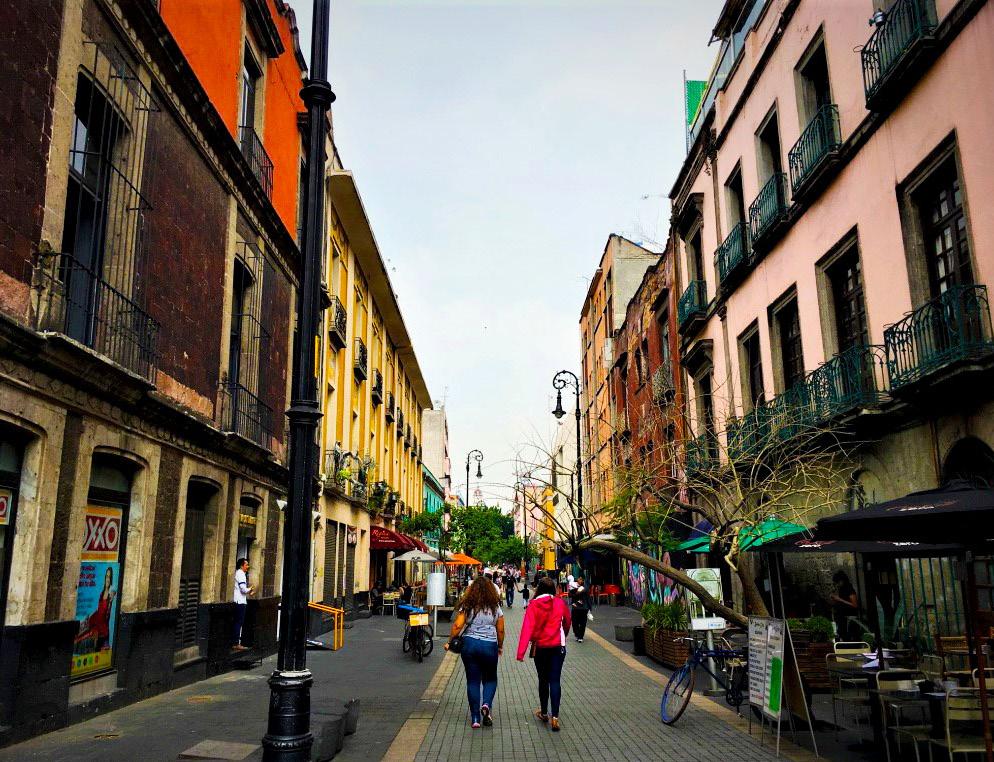
Development pressure puts strain on conservation and housing within historic centres of Mexico. Traditional conservation approaches have focused on aesthetic-economic objectives, still to fully integrate planning aims (UNESCO, 2011, 2016; Labadi & Logan, 2012; Colomb & Novy, 2017). This research aims to address the role of urban conservation to promote social equality in housing provision.
Official discourse has positioned the housing market as a key strategy for historic centres and as an opportunity for heritage conservation. Built on the assertion that deterioration is a product of abandonment, overlooking low-income groups with tenure challenges and limitations. The two-case study approach provides an in-depth assessment of the social impacts across the historic centres of Mexico City and Guadalajara.
Applying a discourse analysis framework using Right to Housing criteria. Assessing meaning construction, place renewal, and displacement phenomena based on local planning instruments and qualitative data. Aiming to provide an assessment tool that informs policy and literature for historic centres in Mexico, Latin America and elsewhere. Providing an assessment that more clearly links heritage conservation and housing provision in places with historic value across different contexts.
PhD PhD
Photo: Simon Austin
Photo: Monica Lopez Franco, 2018
Manchester Regime after Recession: City Leadership, Entrepreneurial Regeneration and Market Sustainability
Frameworks for Urban Conservation: Social Equality Through Housing in Mexican Historic Cities.
Monica Lopez Franco
16 17
Marjan Marjanović
Topic
STIC Research Group
Location
Parkstad (NL) & Teesside (UK)
Scale
City Region
Contribution
Empirical
Primary supervisor
Dr Joanna Williams
Secondary supervisor
Professor Claire
Colomb
Territorial governance and planning of urban circularity in shrinking cities
Territorial governance and planning of urban circularity in shrinking cities

The world of today faces unprecedented pressure on its resources in the face of climate change while cities represent particular hotspots of resource consumption and waste generation. Accordingly, departing from the linear model of resource consumption and transitioning to circular urban systems becomes an imperative for cities around the globe.
With the abundance of vacant land, shrinking cities provide a fertile ground for the development of urban circularity. Meanwhile, urban circular activities can be an important, yet unexplored asset in tackling shrinkage.
Photo: https://www. nationalgeographic. com/Culture/2019/01/ Young-Lonely-HeartsMillennial-NortheastChina-ShrinkingCities/
However, in shrinking cities, a wide spectrum of coalitions and the actual interplay of power, normative settings, and different actors’ interests generate specific traditions and cultures which lead to a hegemony of certain narratives about the nature of urban problems, their causes, and possible solutions. The central issue of transitioning to urban circularity in shrinking contexts, therefore, concerns the efforts to involve a huge variety of stakeholders and to align their expectations and ambitions. Consequently, the question of how different actors come together and work to deliver the transformation of an urban ecosystem of a shrinking city needs to be put under further scrutiny. On that account, this research aims to examine the dynamic and evolving linkages and processes that characterise the governance of urban circularity in shrinking cities.
Martín
Topic Governance and Planning
Location
Spain, Europe Scale Neighbourhood/ District
Contribution
Empirical
Primary supervisor
Professor Yvonne
Rydin
Secondary supervisor Dr Tse-Hui
Eventual Publics: an enquiry on socio-material participation in El Campo de Cebada, Madrid
Eventual urbanism, an enquiry on socio-material participation
TOPIC:

This research begins with a speculation: what if, rather than thinking about public participation as an instrument of planning and urban design, we consider it a socio-material performative phenomenon; in other words, what if, rather than trying to design, organize, devise or implement public participation, we understand it as something that already happens in everyday urban ordinary practices.
To develop this dissertation from this point of departure, I focus on ‘eventual publics’, a concept that combines the idea of ‘eventual urbanism’—which accounts for practices developed in temporarily used urban sites—and the pragmatist understanding of a public as a ‘set of actors affected by an issue and organised around it in order to solve it’. In particular, the research analyses the case of El Campo de la Cebada—a publicly owned urban site in Madrid managed by a heterogeneous group of people—and concentrates at the specific relationship between temporality and materiality. Drawing on an STS perspective—and particularly using ANT—the argument is built around three questions:
How are communities and collectives formed?
How is conflict managed?
And how are care practices deployed?
PhD PhD
Jorge
Sainz de los Terreros
Teh
Photo: Jorge Martín Sainz de los Terreros
Marjan Marjanović
and Plann nG lOCaTIOn SPa n, eurOPe SCale neIGhbOurhOOd/dISTrICT COnTrIbuTIOn emPIrICal
GOvernanCe
Jorge Martín Sainz de los Terreros
18 19
Aleksandra
Milentijevic
Topic
City, Governance and Planning
Location
Belgrade, Serbia
Scale
City
Contribution
Empirical
Primary supervisor
Dr Ben Clifford
Secondary supervisor
Dr Jessica Ferm

Countries with post-socialist legacies face a number of issues including democratic reforms, privatisation, a rapid influx of the free market, and the adaptation to the neoliberal realities. As a former Yugoslav state, this includes Serbia, a country in the Balkan peninsula.
With only 20 years from the first democratic elections, Serbia is still finding its way through the complex environment of transitional democracy. With respect to the urban planning, this includes the explosion of the so-called ‘investor urbanism’ in which investors and developers benefit from powerful positions, as do the political elites whilst citizens have limited opportunities and influence in the planning processes.
The research focuses on the analysis of the current public participation approaches in the urban planning system in Serbia. Analysis of the plan-making and plan-implementation processes will be done through the Belgrade Waterfront project (BWP) which received various criticisms from planning professionals and the academic community, and a significant amount of public activism.
Throughout the research, consideration will be given to the understanding of the power struggles between various actors in the local governance processes.
Paul Moawad
Topic A Comparative Study on Informal Tented Settlements Along the Borderline
Location
Lebanon
Scale
Nationwide
Contribution
Informal and Contested Spaces
Primary supervisor
Dr Lauren Andres
Secondary supervisor Professor Mike Raco
Deconstructing the Lebanese-Syrian borderscape through waiting and temporality
Deconstructing the Lebanese-Syrian Borderscape through the lenses of Waiting, Temporality and Refugees
Paul Moawad
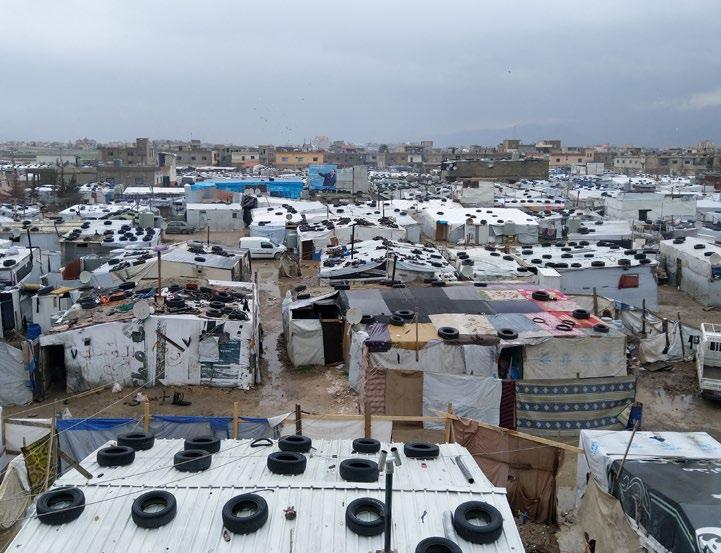
A comparative study on Syrian refugee informal settlements in Lebanon along the borderline Fairly nascent in the field of urban studies and planning, this research fills a gap in deconstructing waiting and temporality in informal tented settlements (ITSs) along the Lebanese-Syrian borderscape.
Temporary spatial experiences lived by protracted refugees inhabiting ITSs that are considered transient and ambivalent are examined in this research.
In unravelling the notion of time and waiting, spaces of borders and contested spaces in ITSs are investigated; perceived as liminal, ambiguous and marginalized territories, those spaces transformed into socio-spatial productions are continuously processed and constructed via refugees’ multi-scalar societal and relational practices.
Furthermore, the waiting experience along borders is not static nor unidimensional but rather a multidimensional one that encompasses social and cultural exchanges. Hence, transient populations, like refugees inhabiting ITSs, develop communal activities benefiting both host-communities and refugees
PhD PhD
Photo: DDL.RS
Photo: Camp 001 in Al Marej, Beqaa Governorate, Lebanon. Taken by author
Aleksandra Milentijevic
20 21
Dimitrios
Panayotopoulos-Tsiros
Topic
Urban Voids, PostIndustrial Cities, Urban Morphology, Urban Metabolism, Urban Political Ecology
Location
Athens, Greece
Scale
Regional
Contribution
Disciplinary, Methodological, Planning Practice
Primary supervisor
Dr Susan Moore
Secondary supervisor
Professor Camillo
Boano
From ‘void’ to ‘voidness’: a trans-scalar

Post-industrial urban environments are often constituted of a patchwork of urbanisms that result in the creation of urban voids; large inactive and neglected areas where key spatial, social and environmental factors are ignored. Highlighting the importance of a relational and trans-scalar approach to planning, this thesis uses the ‘urban void’ known as Eleonas in Athens, Greece to investigate the idea that there is a transformative function proper to these spaces. This function, termed ‘voidness’ is defined as the capacity of urban voids to induce transformative urban change across scales and across urban form, activities and socioeconomic contexts. Hence, throughout this thesis there is a gradual shift from the investigation of an epistemological object: the ‘urban void’, to the exploration of an ontological process: the ‘voidness’ and its implications in daily life and planning practice. Drawing from the disciplines of Urban Morphology, Urban Metabolism and Urban Political Ecology, I trace the transformation of Eleonas in space and time and track how the notion of the ‘void’ is conceptualised at the scales of the region, the municipality and the neighbourhood. Using mappings, observations and interviews with policy makers, residents, local workers and academics I examine under what conditions areas are perceived as ‘voids’ and how this affects the decision-making of the local planning administrations. Furthermore, I explore the derelict and decaying morphology of urban voids, the dwindling local economic activity, the conflicts between local reality and regional planning and critically addresses the dismissal of these spaces as ‘backyards for unwanted uses.’
Andrew Purves
Topic
Cities, Real Estate and Economic Development
Location
London
Scale
City State
Contribution
Empirical
Primary supervisor
Professor Nick Gallent
Secondary supervisor
Dr Josh Ryan-Collins
Economic rent, inequality and public revenue - the Singapore model.
Andrew Purves
Economic rent, inequality and public revenue - the Singapore model

Singapore has experienced rapid economic growth and development since independence, ensuring that its well educated citizens can participate fully in the modern technological information economy. It is known for its low regulation, free market approach; however, beneath the surface, following systematic land acquisition, the government has controlled and directed land use to ensure affordable housing, and well connected industrial and commercial space to attract multinational companies in strategic sectors. At the same time, a leasehold system of ownership has generated significant public revenue streams from land values, while enabling 90% of the population to become homeowners, with 80% in public housing. Through government ownership of development companies, utilities and other corporations, additional revenue is generated from unconventional sources to keep personal and consumption taxes low. The system is an outlier, when compared to conventional systems of taxation adopted by most developed economies, yet it accords with the theoretical perspective of Smith, Ricardo and George amongst the Classical economists. This thesis will explore the origins of the system, whether it was driven by theory, ideology or pragmatism; how the political economy accommodated its introduction, and how it has adapted over time. It will examine in detail the revenue streams collected, and how they are reported. It will test an hypothesis, that not only has the system brought development, but also delivered greater equality of wealth distribution, conforming with Piketty’s measure of an ideal society.
PhD PhD
Photo: Dimitrios
Panayotopoulos-Tsiros
Photo: Dronepicr
From ‘void’ to ‘voidness’: a trans-scalar and relational approach to urban voids in post-industrial cities. Learning from Eleonas, Athens, Greece
Dimitrios Panayotopoulos-Tsiros
22 23
Ruth Sepulveda
Marquez
Topic Sustainable, Transport, Infrastructure & Cities
Location
Chile
Scale
Region
Contribution
Empirical
Primary supervisor
Dr Yvonne Rydin
Secondary supervisor
Professor Claudio De
Magalhães
Sponsor
Becas Chile
Urban Agriculture Projects under the Constrains of Neoliberalism: Networks, Discourses and Story-lines in Santiago, Chile
Ruth Sepulveda Marquez
Urban agriculture projects under the constrains of Neoliberalism:
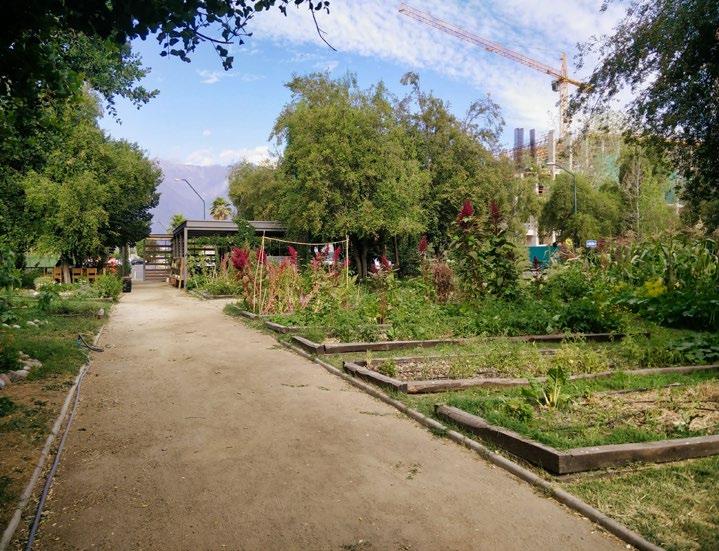
The neoliberal economic and political scenario in Chile, which promotes corporatism, has constantly excluded civil society from decisions regarding sustainability and urban planning. Despite their disadvantaged position, community actors have developed their strategies to communicate their ideas about the environment and social inequality. Urban agriculture emerged in Santiago in times of political conflict and has been used by the community as a platform to raise awareness about social, economic and environmental problems. Due to their relegated position in the society and their work in sustainable issues, urban agriculture groups present an interesting case to understand the position and opinion of civil society in a neoliberal context, especially when most gardens are located in municipalities of low socioeconomic level.
The research analyses the networks and discourses established by civil society in urban agriculture concerning the environment and neoliberalism in Santiago. Through a study case approach with Santiago as the main research area, the study is based on the interviews of 20 groups from different municipalities in the region.
Rotem Shevchenko
Topic Cities, Governance, Planning
Location
UK, Israel Scale
Urban
Contribution
Empirical, Theoretical, Methodological
Primary supervisor
Dr Sonia Arbaci
Secondary supervisor
Dr Juliana Martins

This study explores the under researched phenomenon of urban curation. Urban curation emerges from the interplay between various urban actors (individuals, communities, businesses and policy makers) who are participating in curatorial practices initiated and led, for the most part, by large corporations. These strategies aim to nurture the lifestyles and desires of a certain cohort – the New Elite, within the setting of the experience economy. Within this framework, creation and extraction of values is co-produced through the interaction between consumers and producers. The experience economy has been the subject of urban studies over recent years, highlighting the shift in focus from cities as production clusters to ‘stages’ of consumption activity and spatial destinations. Beyond traditional curation, this set of practices has been applied in the co-working domain. Co-working spaces have become a global phenomenon and recent studies show that the co-working concept has been shifting from being rooted in socio-economic motivations towards increasingly embracing a corporate, for profit, outlook. The notion of The Curated City suggests a scaling up that extends beyond the workspace into the urban, and from work to other spheres of everyday life. The notion of The Curated City suggests a scaling up that extends beyond the workspace into the urban, and from work to other spheres of everyday life. The typology of co-working was chosen for this study, mainly, as it manifests itself as a ‘way of life’, leading to the blurring of work-life boundaries. The notion of The Curated City suggests a scaling up that extends beyond the workspace into the urban, and from work to other spheres of everyday life.
PhD
PhD
Photo: Ruth Sepulveda Marquez
Photo: Picuki
Rotem Shevchenko
24 25
Manqi Wang
Topic
Cities, Real Estate and Economic Development
Location
Guangzhou
Scale
City/Neighbourhood
Contribution
Empirical/Theoretical
Primary supervisor
Professor Fulong Wu
Secondary supervisor Dr Fangzhu Zhang
Xiangyu Wang
Urban redevelopment in China – The Role of Institutions in the Evolution

A vast body of literature has greatly contributed to identifying the forms and processes of urban redevelopment.
Urban redevelopment is becoming a global process, and the notion of urban redevelopment evolves over time and varies in different national contexts. This process urges a re-think of current urban redevelopment theories that are mainly derived from Western experiences. With its rapid transformation and peculiar patterns, urban redevelopment in China provides an essential case for approaching global models of urban redevelopment. Central to the investigation is the clarification of any universal or specific forces driving urban redevelopment in China.
Since 2016, a new round of urban redevelopment, namely incremental redevelopment has begun to unfold in southern China. This research aims to explore the dynamics of recent urban redevelopment in Guangdong Province, providing empirical cases for enriching the theory of urban redevelopment. It is held that urban redevelopment in China in its current form is by no means a spontaneous process, but results from capital accumulation, and more importantly, state dominance. The study examines the underlying forces of contemporary urban redevelopment with regard to two themes through case studies of inner-city Guangzhou.
Xiangyu Wang
Topic Cities, Real Estate and Economic Development
Location China
Scale Region Contribution
Empirical, Theoretical
Primary supervisor Professor Fulong Wu
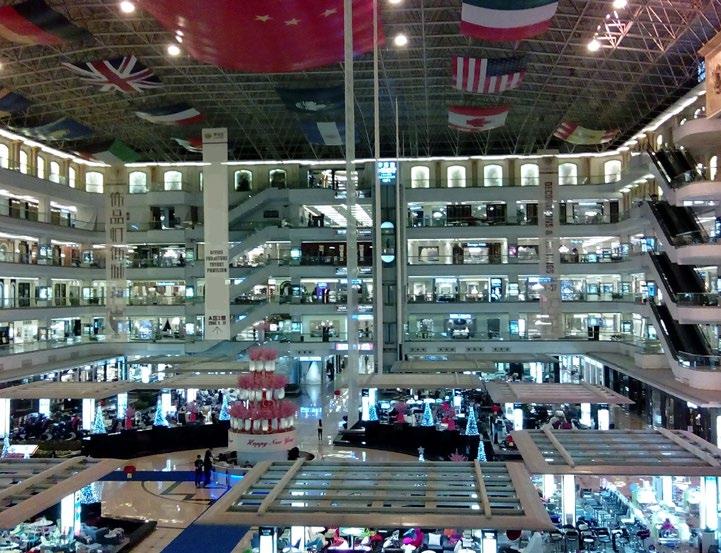
Most existing literature in economic geography discusses specific issues of the evolution process separately. Institutional economic geographers hold divergent institutionalisms and research perspectives. The recent evolutionary approaches face a risk of theoretical relegation.
Mainland China has experienced a rapid industrialisation process since 1978. Most of the traditional labour-intensive industrial clusters in China originate and develop in rural areas or small towns.
Local institutions are constrained by macro-level policies and extra-local factors. The purpose of this research is to explore some key institutions that shape the evolution of traditional manufacturing industries and their prominent spatial implications in China.
Results show that the overall evolution of the three market institutions is a layering process, which indicates the path dependence of the two older institutions, despite the fact that the partial replacement or conversion of these two institutions also occurred.
PhD PhD
Photo: Manqi Wang
Urban Redevelopment in China - A Case Study of Innercity Guangzhou
Photo: Taken during field work
Industrial Agglomerations
Manqi Wang
26 27
Mengran Xu
Topic
Cities, Governance and Planning
Location
China
Scale
Individual
Contribution
Empirical, Conceptual
Primary supervisor
Professor Fulong Wu
Secondary supervisor Dr Susan Moore
The willingness to integrate and actual social integration of migrants in urban China
Mengran Xu
Migrants’ attitudes towards social integration in
urban
China
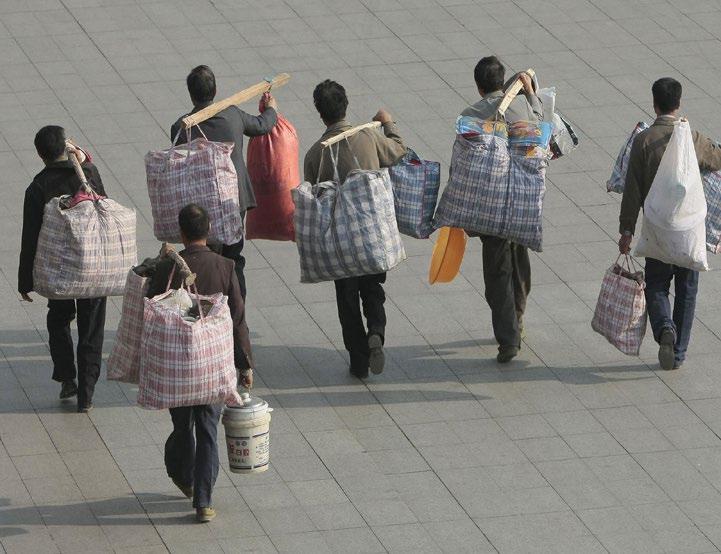
Social integration has become one of top issues in many countries as migration is prevalent worldwide and social integration is important for both individuals’ wellbeing and social stability. Most existing research on social integration has focused on migrants’ actual social connections with destinations, but few attempts have been made to investigate their attitudes towards social integration.
This study explores migrants’ willingness to integrate and actual social integration in urban China where migrants’ attitudes and opinions are largely ignored in current policy agenda. More specifically, I will use both quantitative (2014 China Migrants Dynamic Survey) and qualitative approach (semi-structured interviews) to answer following questions: 1. What are the key determinants of migrants’ willingness to interact with localsand participate in local activities? 2. To what extent are these two kinds of integration willingness consistent or inconsistent with respective social integration outcomes, namely, intergroup relationships and social participation? 3. What are the underlying dynamics of the consistency or discrepancy? The novel contribution of this study is to develop an explanation framework of migrants’ willingness towards social integration and unravel the conditions under which this willingness can or cannot translate into actual behaviours.
Yuerong Zhang
Topic
Sustainable Transport, Infrastructure & Cities
Location
London
Scale
City & Neighbourhood
Contribution
Empirical, Theoretical
Conceptutheoretical, Methodological
Primary supervisor
Professor Stephen Marshall
Secondary supervisor Dr Ed Manley
Towards better understanding of metro system resilience from joint perspectives: an intra-urban study of Greater London
The resilience of London Transit from network perspectives
Yuerong Zhang

In recent years, the popularity of “resilience” has exploded in both academic and policy discourse. However, current transit resilience research only focuses on infrastructure resilience, giving little consideration of an increasing complex and multiple characteristics of transit system, such as the places for job and channels to social activities. And even for transit infrastructure resilience, there is not a comprehensive framework for assessing resilience property to reflect its dynamic property at multiple levels.
Therefore, the focus of this research is to gain a network perspective of the transit resilience performance from a joint perspective with focuses of the interactions between infrastructure and passengers. In addition, the work is motivated by bridging the theoretical gap between urban network and complex network science disciplines by developing a new urban transit network to re-examine the transit resilience in urban context.
Specifically, this study argues the transit resilience should not be undersootd from infrastrucuture performance but the interaciton between transit infrasrucutre and passenger travel movemnt at macro, meso and micro levels.
Photo:
PhD PhD
https://k.sina.cn/ Article_5174744097_
134705421001002oln. html
Photo: World Flight Networks Clustering
28 29
Jingyi Zhu
Topic
Urban Design
Location
Shanghai
Scale
City
Contribution
Empirical
Primary supervisor
Professor Matthew
Carmona
Secondary supervisor
Dr Pablo Sendra
Unblocking the Bottleneck or Digging the Divide? Public Space Between Visionary Narrative and Everydayness in Contemporary Shanghai Urban Transformation
Jingyi Zhu
Understanding social production and construction of public space from the perspective of public-private dynamics: A case study of Shanghai

Shanghai, as a representative of the developed cities in China, is undergoing an urban transformation different from the paradigm in the past two decades featured by the so-called ‘massive demolition and massive construction’, and the city needs to adopt a more humanist approach to improving the quality of urban life in addition to aiming for higher competitiveness on the national and the global stage. In this process, urban public space is a crucial element that on the one hand produces a series of broad socio-economic values and on the other hand serves people’s everyday needs.
It is in this context that this research explores the role of public space in the city’s transformation process and its duality both as a tool to achieve the city’s strategic development visions and a site for citizens’ everyday use. The following research questions are explored: (1) What are the key inherent socio-economic and cultural elements underpinning different types of public spaces in the city and how do they play out in the current public space development? (2) How do design practices and discourses around key public space projects unfold as the result of both the city’s strategic visioning and the needs of citizens? And (3) How do these strategic projects bridge the gap or aggravate the tension between the city’s future visions and people’s everyday use of the space?
Kan Zhu
Topic
Cities, Real Estate and Economic Development
Location China
Scale City
Contribution
Empirical
Primary supervisor
Dr Fangzhu Zhang
Secondary supervisor
Professor Fulong Wu
Building innovation under China’s evolving urban governance: A case
Kan Zhu

In March 2015, the national plan of ‘Made in China 2025’ was launched to develop several high-tech projects in strategic sectors. Along the continuous efforts to foster ‘indigenous innovation’ since 2006, the meaning of ‘innovation’ in China’s recent state initiatives has been extended from science and technology domains to the provisions of ‘high-tech’ space as well. Notions like ‘science cities’, ‘featured towns’, or ‘new areas’ start to replace the former ‘science parks’ or ‘development zones’ as popular planning concepts and practices among Chinese cities.
As current studies argue that ‘the reassertion of state power’ during China’s recent path towards innovation has been evident, we may ask: what do such initiatives of making science cities actually comprise? How are they being implemented in relation to China’s restructuring urban governance? Looking into the case of the Zhangjiang Science City in Shanghai, this research aims to answer these questions by 1) studying the institutional and policy transformations at multiple levels; 2) rethinking how the land component is linked to the development of innovation through different stages; 3) investigating the state agencies and their arms in the governance of the science city, which may represent a nuanced version of ‘state entrepreneurialism’ in urban China.
PhD PhD
Photo: Jingyi Zhu
Photo: The Zhangjiang E-Park. Kan Zhu, Sep, 2019.
The making of science cities under China’s resturcturing urban governance
30 31


 Juan Alberti
Juan Alberti































